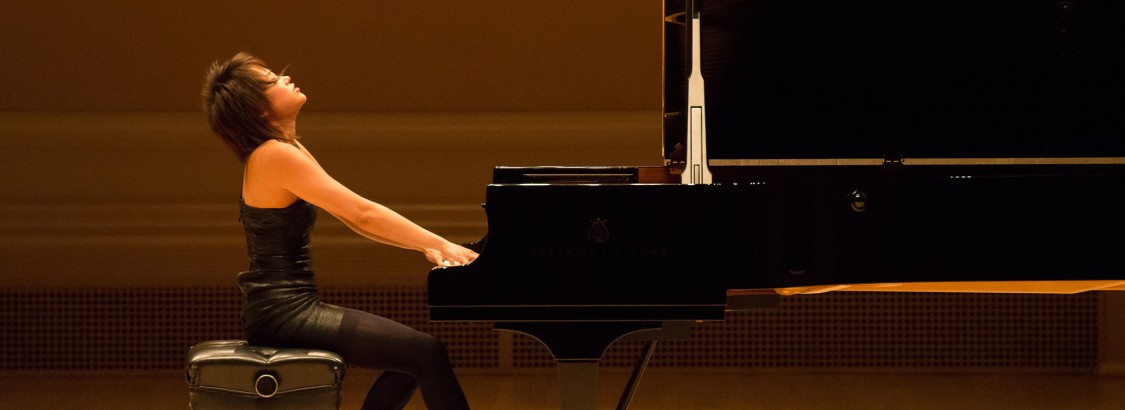Christian Hertzog, The San Diego Union-Tribune
Wang was capable of stark clarity during the most difficult passages, and her ability to produce such enormous sounds from the piano in spite of her thin frame and small gestures seemed to defy Newtonian physics. Yet she too was tuned in to Debussy’s subconscious intent; both audibly brought Debussy’s dreams to life.
Janáček’s Sonata similarly avoids traditional forms, yet differs from Debussy in Janáček’s block-like structures. Ideas don’t flow into each other, but abruptly change like TV channels. Here again Kavakos and Wang convincingly conveyed this unusual musical discourse. Wang’s playing was liquid, almost delirious. There was an especially striking moment in the last movement where Kavakos’ playing suddenly dropped to such a faint level that his pianissimo echoes seemed like auditory hallucinations — you weren’t quite sure if you were hearing something or not.
Bartók’s “Sonata No. 1 for Violin and Piano” is almost a century old, yet its intensely dissonant harmonic language and dislocated melodies can still upset patrons enough to make them flee the hall (several did). It is one of Bartók’s most challenging compositions, for performers and listeners both. The technical complexities for both players are so great that performances rarely transcend all of the notes being properly played.
Kavakos and Wang dispensed with those difficulties and took us on a profound musical journey, from the anguished argument of the first movement to the melancholy introspection of the second, and culminating in the hair-raising fury of the last movement’s wild dance. I’ve never heard a performance so compelling and so illuminating, and the audience members who stayed were also clearly moved, judging from the whoops and standing ovation that burst out when Bartók’s musical roller coaster slammed to a halt.



